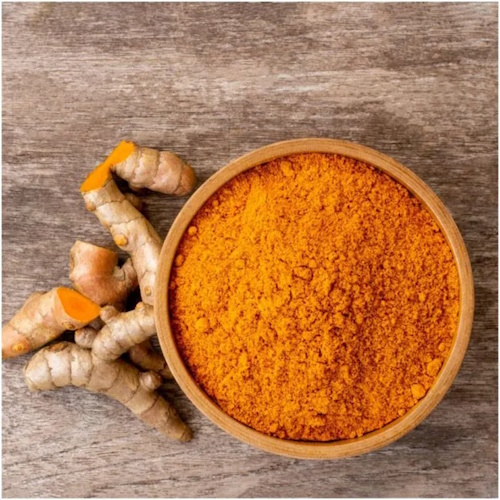Inflammation gets a bad rap.
Though the redness and swelling that accompany inflamed tissue aim to help our bodies heal, chronic inflammation can contribute to disease and discomfort.
Implementing lifestyle changes and targeted strategies can help manage inflammation. Read on for ten effective tips that should help.
Understanding Inflammation
Inflammation occurs when our immune systems respond to irritation, injury, or infection. Blood flow increases to the affected area, resulting in the tell-tale heat, swelling, redness, and pain.
Short bouts benefit us by fighting invaders and starting tissue repair. However, ongoing, low-grade inflammation plays a role in many chronic diseases.
Though some causes lie outside our control, like genetics and environmental pollutants, we can influence systemic inflammation through diet, exercise, sleep, and stress reduction. Lifestyle changes take time but can move the needle.
1. Eat More Fruits, Vegetables, and Whole Grains
Studies consistently associate diets high in processed foods and added sugars with higher levels of chronic inflammation.
Fruits, vegetables, and whole grains deliver antioxidants and fiber that combat inflammation in multiple ways.
Aim for variety, as different colors provide unique inflammation-fighting phytonutrients.
Try new recipes or tweak old favorites by adding spinach, mushrooms, squash, berries, or legumes. Gradually increase the fiber in your diet with whole grains and limit added sugars. Even small steps can make a difference over time.
2. Walk More

You likely hear often about exercise’s abundant benefits, including for inflammation.
Walking offers easy access to cardio exercise for all mobility levels. The American Heart Association recommends aiming for at least 150 minutes of moderate intensity exercise per week.
Turn daily movement into intention by counting steps, planning new neighborhood routes, enlisting friends, or scheduling walking meetings. Consistency matters more than speed or duration. Over time, brisk daily walks reduce inflammatory proteins by helping you to lose excess fat stores that contribute to inflammation.
3. Prioritize Sleep

Chronic sleep loss stresses the body, triggering systemic inflammation through surges in inflammatory signaling proteins and stress hormones. Getting consistent, sufficient sleep enables proper immune functioning.
Shoot for 7-9 hours nightly by developing strong sleep habits.
Turn off screens an hour before bed, limit caffeine after noon, establish a calming pre-bed routine, and make your bedroom exclusively for sleep by removing TVs and laptops. Sleep catches up on accumulated debt quickly, so even one week of adequate rest can make a big difference.
4. Learn Stress Reduction Techniques
Unmanaged stress churns out inflammatory proteins like TNF, IL-6, and CRP while lowering infection-fighting antibodies and cells.
Chronic stress sustains inflammation even after threats pass by, keeping these systems engaged. Research demonstrates that meditation, yoga, breathwork, and mindfulness effectively combat stress and inflammation markers.
Start small by carving out 5-10 minutes for square breathing: Inhale for 4 counts, hold for 4 counts, exhale for 4 counts. Or set a daily meditation using an app. Over time, stress-reduction practices compound, enhancing resilience.
5. Eat More Omega-3s
These healthy polyunsaturated fatty acids boast robust anti-inflammatory effects. Since our bodies don’t produce omega-3s, we source them through foods or supplements.
Fatty fish like salmon and mackerel deliver the most, but plant sources like walnuts, flaxseed, chia seeds and canola oil contribute too.
Aim for at least two 3.5 ounce servings of fatty fish weekly or consider a supplement. Bonus benefits like supporting brain and heart health make upping omega-3s an easy win.
6. Stay Hydrated

Dehydration stresses all of the body systems, including immunity, by decreasing fluid volume. Even mild dehydration triggers increases in inflammatory markers. You can balance fluids by sipping water consistently throughout your day.
Notice the thirst signals and drink a glass of water. Consume water or herbal tea instead of sweetened beverages.
Infuse your water with antioxidant-rich fruits or cucumbers for flavor. Not sure if you drink enough fluids daily? Check that your urine appears light yellow. Dark yellow concentrations reflect dehydration and signal a need to up water intake.
7. Don’t Ignore Pain
Unmanaged acute or chronic pain kick-starts an inflammatory cascade, increasing inflammatory cell activity and proteins. Pain also stresses the body, much like emotional stress.
Seek appropriate treatments for injury, nerve pain, headaches, or ongoing discomfort. Anti-inflammatories like acetaminophen and NSAIDs treat pain and inflammation for many acute issues.
Physical therapy, massage, gentle movement, and yoga help ease certain pain triggers too. Managing pain minimizes secondary stress and inflammation effects. Discuss options with your doctor for developing an appropriate pain management plan if you face ongoing discomfort.
8. Add Turmeric

The bright yellow spice turmeric contains the powerful anti-inflammatory compound curcumin. Traditional Eastern medicine uses turmeric widely to treat inflammatory conditions.
Research shows turmeric rivals over-the-counter anti-inflammatories for reducing inflammatory cytokines. Sprinkle turmeric over roasted vegetables or add it to soups, smoothies, dressings, and curries. Pair turmeric with black pepper’s piperine to amp absorption.
Or sip turmeric tea. Consider curcumin supplements for therapeutic anti-inflammatory effects but discuss this with your doctor due to the way it interacts with some medications.
9. Try an Ice Bath
From professional athletes to weekend warriors, ice baths help ease sore muscles and inflammation. Beyond soothing feelings of relief, cold-water immersion constricts blood vessels to reduce blood flow, edema, swelling, and localized inflammatory biomarkers. Luckily, you don’t need anything fancy to DIY your own ice bath at home.
Fill your bathtub halfway with cold water and drop in trays of ice cubes. Soak sore areas for 10-15 minutes as tolerated once or twice daily. Ice baths provide simple, inexpensive inflammation relief without fancy equipment.
10. Consistency Over Time Matters Most
Implementing anti-inflammatory lifestyle changes requires commitment over time, but small steps make a difference. Focus on one new habit a week like going for a 15-minute walk or prepping clean eating staples.
Write your weekly goal on the mirror with dry-erase marker to stay focused. Inflammation accumulates, so sticking with changes consistently matters most, even if progress feels slow. Enlist friends for accountability and encouragement.
Soon anti-inflammatory habits will become routine, compounding a reduction in physical and mental inflammation drivers for better health.
Implementing even small, gradual lifestyle changes to combat inflammation can pay significant dividends over time. Consistently reducing both physical and mental drivers of inflammation helps minimize disease risk and discomfort for better health.




